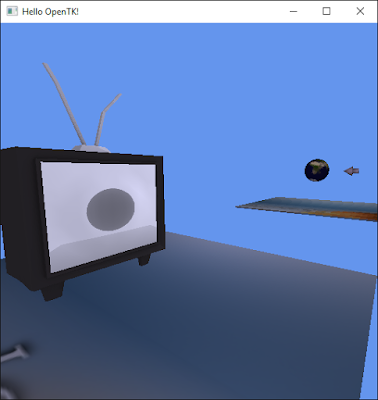I wanted to jump right into shadows next, but I realized that there's a few prerequisites before we get to that. One of those is rendering to a framebuffer/texture, and another is getting a depth map from another camera. So, next up is handling both of those. In addition, cube maps would be needed to handle shadows from point lights, so that's another topic to add.
However, my job is going to be picking up soon, and these require a lot of changes to the existing code that would take a lot of time to make as another tutorial in the series. Like before, I'm considering doing examples instead of tutorials here on out, so we can cover more topics in less time. The examples would still break down the new stuff, but they won't follow the process of adding it to the previous topic's project files.
 |
| Here the TV screen is showing the view from a second camera (the second camera is at the arrow) |
 |
| Here it is rendering the depth information from the other camera |

